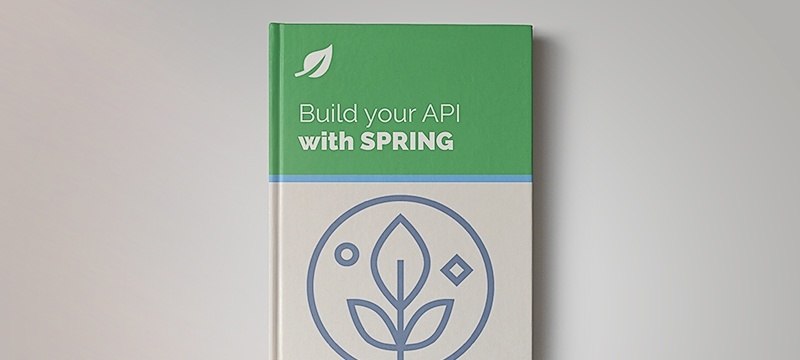1. Introduction
Jersey is a popular Java framework for creating RESTful web services.
In this tutorial, we’ll explore how to read different request parameter types via a simple Jersey project.
2. Project Setup
Using Maven archetypes, we’ll be able to generate a working project for our article:
mvn archetype:generate -DarchetypeArtifactId=jersey-quickstart-grizzly2
-DarchetypeGroupId=org.glassfish.jersey.archetypes -DinteractiveMode=false
-DgroupId=com.example -DartifactId=simple-service -Dpackage=com.example
-DarchetypeVersion=2.28
The generated Jersey project will run on top of a Grizzly container.
Now, by default, the endpoint for our app will be http://localhost:8080/myapp.
Let’s add an items resource, which we’ll use for our experiments:
@Path("items")
public class ItemsController {
// our endpoints are defined here
}
Note, by the way, that Jersey also works great with Spring controllers.
3. Annotated Parameters Types
So, before we actually read any request parameters, let’s clarify a few rules. The allowed types of parameters are:
Also, we can register an implementation of the ParamConverterProvider JAX-RS extension SPI. The return type must be a ParamConverter instance capable of a conversion from a String to a type.
4. Cookies
We can resolve cookie values in our Jersey methods using the @CookieParam annotation:
@GET
public String jsessionid(@CookieParam("JSESSIONId") String jsessionId) {
return "Cookie parameter value is [" + jsessionId+ "]";
}
If we start up our container, we can cURL this endpoint to see the response:
> curl --cookie "JSESSIONID=5BDA743FEBD1BAEFED12ECE124330923" http://localhost:8080/myapp/items
Cookie parameter value is [5BDA743FEBD1BAEFED12ECE124330923]
Or, we can resolve HTTP headers with the @HeaderParam annotation:
@GET
public String contentType(@HeaderParam("Content-Type") String contentType) {
return "Header parameter value is [" + contentType+ "]";
}
Let’s test again:
> curl --header "Content-Type: text/html" http://localhost:8080/myapp/items
Header parameter value is [text/html]
6. Path Parameters
Especially with RESTful APIs, it’s common to include information in the path.
We can extract path elements with @PathParam:
@GET
@Path("/{id}")
public String itemId(@PathParam("id") Integer id) {
return "Path parameter value is [" + id + "]";
}
Let’s send another curl command with the value 3:
> curl http://localhost:8080/myapp/items/3
Path parameter value is [3]
7. Query Parameters
We commonly use query parameters in RESTful APIs for optional information.
To read such values we can use the @QueryParam annotation:
@GET
public String itemName(@QueryParam("name") String name) {
return "Query parameter value is [" + name + "]";
}
So, now we can test with curl, like before:
> curl http://localhost:8080/myapp/items?name=Toaster
Query parameter value if [Toaster]
For reading parameters from a form submission, we’ll use the @FormParam annotation:
@POST
public String itemShipment(@FormParam("deliveryAddress") String deliveryAddress,
@FormParam("quantity") Long quantity) {
return "Form parameters are [deliveryAddress=" + deliveryAddress+ ", quantity=" + quantity + "]";
}
We also need to set the proper Content-Type to mimic the form submission action. Let’s set the form parameters using the -d flag:
> curl -X POST -H 'Content-Type:application/x-www-form-urlencoded' \
-d 'deliveryAddress=Washington nr 4&quantity=5' \
http://localhost:8080/myapp/items
Form parameters are [deliveryAddress=Washington nr 4, quantity=5]
9. Matrix Parameters
A matrix parameter is a more flexible query parameter as they can be added anywhere in the URL.
For example, in http://localhost:8080/myapp;name=value/items, the matrix parameter is name.
To read such values, we can use the available @MatrixParam annotation:
@GET
public String itemColors(@MatrixParam("colors") List<String> colors) {
return "Matrix parameter values are " + Arrays.toString(colors.toArray());
}
And now we’ll test again our the endpoint:
> curl http://localhost:8080/myapp/items;colors=blue,red
Matrix parameter values are [blue,red]
10. Bean Parameters
Finally, we’ll check how to combine request parameters using bean parameters. To clarify, a bean parameter is actually an object that combines different types of request parameters.
We’ll use a header parameter, a path and a form one in here:
public class ItemOrder {
@HeaderParam("coupon")
private String coupon;
@PathParam("itemId")
private Long itemId;
@FormParam("total")
private Double total;
//getter and setter
@Override
public String toString() {
return "ItemOrder {coupon=" + coupon + ", itemId=" + itemId + ", total=" + total + '}';
}
}
Also, to get such a combination of parameters, we’ll use the @BeanParam annotation:
@POST
@Path("/{itemId}")
public String itemOrder(@BeanParam ItemOrder itemOrder) {
return itemOrder.toString();
}
In the curl command, we’ve added those three types of parameters and we’ll end up with a single ItemOrder object:
> curl -X POST -H 'Content-Type:application/x-www-form-urlencoded' \
--header 'coupon:FREE10p' \
-d total=70 \
http://localhost:8080/myapp/items/28711
ItemOrder {coupon=FREE10p, itemId=28711, total=70}
11. Conclusion
To sum it up, we’ve created a simple setup for a Jersey project to help us explore how to read different parameters from a request using Jersey.
The implementation of all these snippets is available over on Github.






